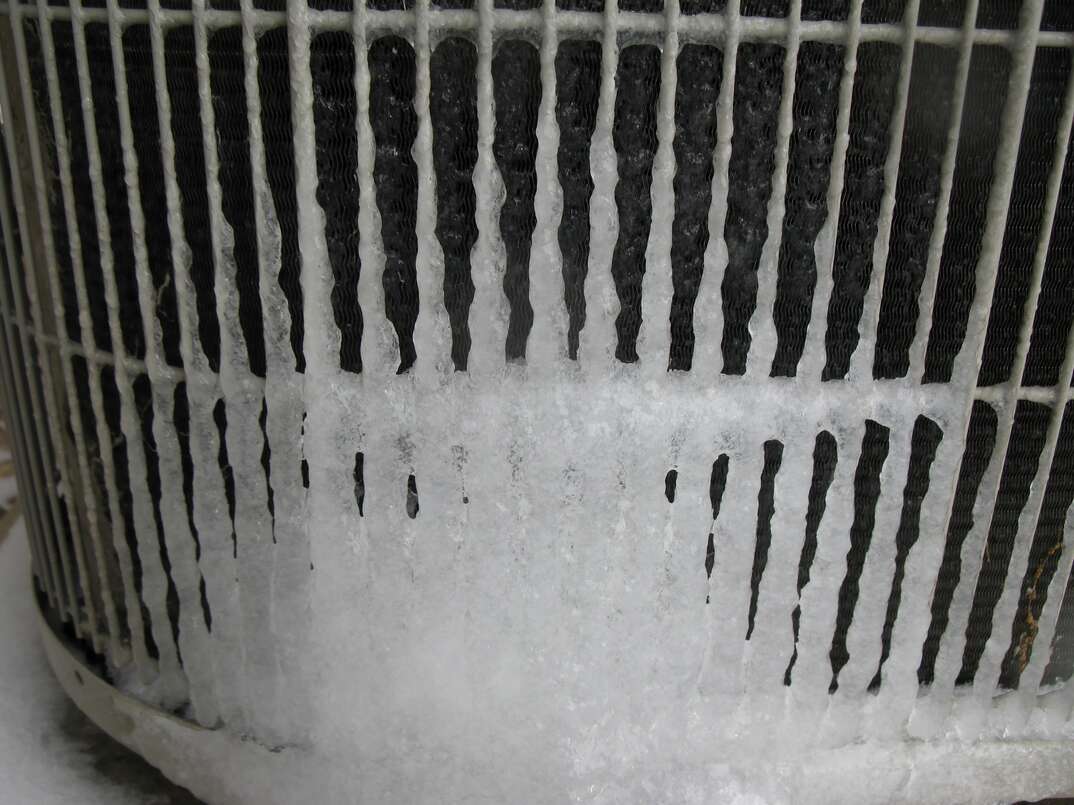Icy Air Conditioner Pipe - Reasons and How to Resolve the Problem
Icy Air Conditioner Pipe - Reasons and How to Resolve the Problem
Blog Article
Listed here below you can locate a bunch of good help and advice when it comes to How can I fix an air conditioner’s frozen pipe?.

Introduction
Discovering that your AC pipeline is frozen can be concerning, particularly during warm summertime when you rely upon your ac unit one of the most. Recognizing what to do in such a situation is vital to prevent additional damage to your cooling system and ensure your convenience inside your home.
Recognizing the Causes
Several elements can contribute to the freezing of an air conditioner pipe. Understanding these reasons can assist you attend to the concern properly.
Lack of Airflow
One usual cause of a frozen AC pipeline is inadequate airflow. When the air flow over the evaporator coil is restricted, it can create the coil to go down below freezing temperature level, causing ice formation on the pipe.
Reduced Refrigerant Levels
Not enough refrigerant levels in your air conditioning system can also cause a frozen pipeline. Low cooling agent levels can trigger the pressure in the system to go down, leading to the cold of dampness on the evaporator coil.
Cold Weather Conditions
In colder climates, freezing temperature levels outside can contribute to the freezing of AC pipelines. If your a/c system is not properly shielded or if there are leaks in the ductwork, cool air can infiltrate the system, creating the pipe to ice up.
Dirty Air Filters
Filthy or blocked air filters can limit air flow in your AC system, bring about various concerns, including an icy pipe. It's necessary to replace or clean your air filterings system on a regular basis to guarantee appropriate air flow and avoid ice build-up.
Indications of a Frozen A/c Pipe
Acknowledging the indicators of a frozen air conditioning pipe is vital for punctual activity.
Reduced Airflow
If you see a substantial decline in air movement from your vents, it can show an icy pipe.
Ice Buildup on the Pipe
Noticeable ice build-up on the refrigerant line or the evaporator coil is a clear indication of an icy a/c pipeline.
Strange Sounds from the Unit
Uncommon sounds, such as hissing or gurgling, coming from your air conditioner device can indicate that there's ice existing on the pipeline.
Immediate Actions to Take
When faced with an icy air conditioner pipeline, it's vital to act quickly to avoid more damage to your air conditioning system.
Switching off the air conditioner
The very first step is to switch off your a/c unit to stop the system from running and aggravating the concern.
Checking for Blockages
Inspect the area around the indoor system for any kind of blockages that may be obstructing airflow, such as furnishings or drapes.
Defrosting the Pipe
You can make use of mild techniques like placing towels soaked in warm water around the frozen pipe to aid thaw it slowly.
Safety nets
Taking safety nets can help stay clear of future occurrences of a frozen AC pipe.
When DIY Methods Fail
If your attempts to thaw the pipe or address various other problems are unsuccessful, it's time to hire a specialist.
Significance of Hiring a Professional HVAC Technician
A qualified HVAC service technician has the knowledge and tools required to identify and fix concerns with your air conditioner system safely and effectively.
Regular Maintenance Checks
Set up regular maintenance consult an expert HVAC service technician to guarantee that your a/c system is running effectively.
Changing Air Filters
Consistently change or cleanse your air filters to prevent air movement limitations and keep optimal performance.
Protecting Exposed Pipes
If your air conditioner pipes are subjected to cool temperatures, think about shielding them to avoid cold during winter season.
Seeking Professional Help
If DIY approaches fall short to settle the concern or if you're unsure about exactly how to proceed, it's finest to look for aid from a qualified HVAC technician.
Verdict
Dealing with an icy AC pipe can be an irritating experience, however understanding how to react can aid reduce damage and restore comfort to your home. By recognizing the causes, acknowledging the indicators, and taking timely action, you can efficiently address the concern and protect against future events.
What to Do If Your AC Line Is Frozen
Make Sure All Supply and Return Air Vents Are Open
If you notice problems with airflow, the first thing you should do is check your supply and return vents. Supply vents distribute clean, conditioned air throughout your home. As this air becomes stale, it’s pulled into the return vent, where it’s reconditioned before being sent back out through the supply vent.
When these vents are closed, air won’t flow in the home. Before examining your AC, check the vents in every room and ensure they’re all open.
Check for a Dirty Air Filter
Another possible cause of limited airflow is a dirty air filter. Your air conditioner’s filters catch elements you don’t want to breathe in, such as dirt and dust. Over time, filters can become clogged, ultimately blocking air from flowing in and out. The lack of airflow can then cause the entire coil to freeze and will completely restrict any air from moving through it. The AC may need to be powered off for one to two days to allow the coil to thaw after replacing the filter to allow proper functioning of the unit. This debris can also accumulate on your AC’s evaporator coil, requiring a more serious repair. In general, air filters should be cleaned regularly (about every two weeks).
Assess Your Outdoor Unit
In addition to checking your AC, assessing the outdoor unit is a good idea. Also known as the condensing unit, it works with your interior unit to release heat outside. An issue with the outdoor unit can result in rising internal temperatures.
Overgrown Shrubs or Clogged Leaves
From leaves and twigs to shrubs and debris, there’s no shortage of outdoor elements that can accumulate around your condensing unit. When these elements get lodged inside the unit, they can block airflow. Fortunately, removing the blockage can solve the problem.
Sounds of a Broken Fan
Shrubs and leaves aren’t the only things that can impede your outdoor unit’s airflow. If the fan is broken, the unit won’t be able to properly get rid of heat — which means the internal temperature won’t go down. First, make sure the fan is spinning. If it is, check for the following sounds of a broken fan:
Buzzing Rattling Screeching Hissing Clicking Preventative Measures
Nobody wants to deal with a frozen AC line. In addition to causing problems with your air conditioner, they require professional repairs. On the bright side, there are preventative measures you can take to help ensure this issue doesn’t arise in the first place.
https://www.coopergreenteam.com/blog/what-to-do-if-ac-line-frozen

I was shown that report on Air Conditioner Frozen? How To Fix your Frozen AC Line from an acquaintance on a different web page. Are you aware of anybody else who is enthusiastic about the subject? Please feel free to share it. Many thanks for your time. Please come visit our website back soon.
Visit Website Report this page